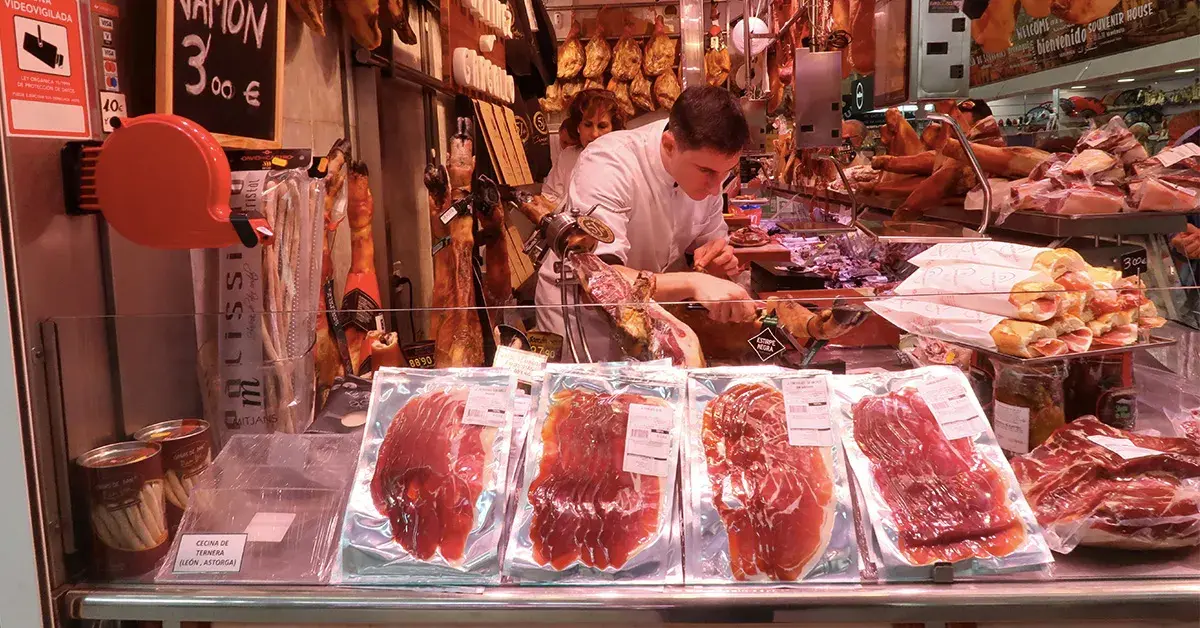Browse Through Bagley Farms Meat Market Edwardsville IL for Farm-Fresh Meat and Specialized Cuts
Browse Through Bagley Farms Meat Market Edwardsville IL for Farm-Fresh Meat and Specialized Cuts
Blog Article
Discover the Art of the Butcher's Cut in a Modern Meat Market
In the ever-evolving landscape of modern-day meat markets, the butcher's cut has actually transcended its standard roots, merging age-old craftsmanship with contemporary practices. Today's butchers are not merely cpus of meat; they are educated craftsmens who emphasize sustainability and ethical sourcing. Their know-how in picking and preparing cuts tailored to specific cooking demands uses an unmatched eating experience. Yet, what truly establishes the contemporary butcher apart is their capacity to create a much deeper connection between customers and the beginnings of their meat. Exactly how do these masters balance practice with advancement, and what ramifications does this have for the future of meat usage?
Advancement of Butchery Methods
The advancement of butchery methods mirrors a rich tapestry of innovation and adjustment driven by improvements in technology, adjustments in consumer need, and a much deeper understanding of meat science. Historically, butchery was a craft gave through generations, with techniques refined over centuries to make best use of return and flavor. The commercial change ushered in mechanization, transforming standard techniques and enabling massive handling.
The mid-20th century saw butchery strategies even more fine-tuned by clinical insights right into muscular tissue biology and meat aging, enhancing both tenderness and taste. Technologies like vacuum packaging and refrigeration extended item shelf-life, enabling butchers to branch out offerings and boost top quality control. This period also marked the rise of specialized devices, such as band saws and meat slicers, which boosted accuracy and performance in meat handling.

Digital systems currently help in tracking pet provenance and enhancing cuts to meet details client preferences. Furthermore, a revival in artisanal butchery has arised, blending typical abilities with modern expertise to cater to customers seeking moral and sustainable meat options.
Recognizing Meat Cuts
Recognizing the ins and outs of meat cuts is important for both butchers and customers seeking high quality and value. For butchers, precise cuts show ability and respect for the craft, making sure marginal waste and optimal return.

Understanding muscle make-up is critical; muscle mass used more regularly by the animal tend to be tougher and are best suited for slow-moving cooking methods, while less-used muscular tissues, like those discovered in the loin, are more tender and perfect for grilling or roasting. Familiarity with these distinctions encourages consumers to make enlightened options, enhancing their cooking endeavors.
Picking Quality Meat
Choosing the appropriate meat involves even more than simply picking a visually attractive item from the display. The art of selecting high quality meat needs a critical eye and understanding of details features that indicate quality and quality.
Secondly, take into consideration the marbling, which describes the white flecks of fat within the muscular tissue. Appropriate marbling is a vital indicator of tenderness and flavor, as it melts during cooking, improving the meat's juiciness. Bear in mind, greater marbling frequently correlates with superior high quality cuts, such as USDA Prime.
Appearance is next an additional essential variable; meat should feel firm to the touch, not slimy or overly soft. Additionally, be conscious of the fragrance. Fresh meat should have a clean, neutral smell, complimentary from any type of sour or off-putting odors.
Matching Cuts With Cooking Methods

On the other hand, harder cuts like brisket and chuck roast are rich in collagen, which damages down right into jelly when cooked slowly. These cuts are suitable for braising or slow-moving roasting, allowing the meat to tenderize gradually and create deep, complex tastes. In a similar way, cuts such as short ribs and pork shoulder fare well with slow-cooking techniques, where prolonged cooking times change their durable appearances right into delicious recipes.
Lamb shanks and oxtail, which call for prolonged cooking to tenderize, are perfect candidates for stewing or slow simmering. These methods coax out abundant, passionate flavors while preserving wetness. By recognizing the special features of each cut, cooks and home chefs alike can raise their culinary developments, making sure each recipe is both pleasing and unforgettable.
The Butcher's Role Today
Browsing the progressing landscape of the contemporary meat market, the butcher's role today expands beyond plain prep work of cuts. Contemporary butchers are culinary craftsmens, teachers, and supporters for sustainable practices. They connect the gap in between the ranch and the fork by making certain honest sourcing, recognizing animal husbandry, and focusing on transparency in the supply chain. This change shows the expanding consumer need for quality over amount, where provenance and animal well-being are paramount.
Along with crafting exact cuts, butchers now engage straight with customers, using cooking advice and tailoring options to suit private demands and preferences. Their experience in meat aging, marbling, and flavor profiles encourages consumers to make educated choices, boosting their culinary experiences. This individualized solution exhibits the butcher's developing duty as a relied on expert in the kitchen.
Additionally, butchers are crucial in minimizing waste, using entire pets to develop varied items such as sausages and supplies. This comprehensive method not just values the pet yet also aligns with contemporary sustainability goals. This way, the contemporary butcher personifies both Going Here practice and innovation, adapting to an ever-changing market while preserving the artistry and integrity of their see here now craft.
Final Thought
Proficiency in comprehending diverse meat cuts and quality indicators encourages butchers to supply informed recommendations, straightening certain cuts with ideal cooking approaches. By recognizing historical techniques while accepting contemporary needs, the butcher's function remains essential in today's advanced meat market.
Report this page